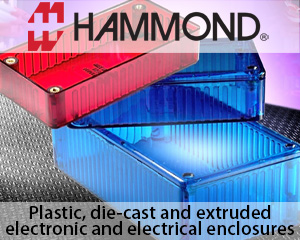Enhanced ODIN-W2 and NINA-B1 modules to be demonstrated at ARM TechCon, Oct 26-27
Thalwil, Switzerland – October 24, 2016 – u-blox (SIX:UBXN), a global leader in wireless and positioning modules and chips, today announced ARM® mbed™ OS 5 support for the ODIN-W2 (https://www.u-blox.com/en/pro
The ARM mbed OS 5 incorporates a real-time operating system (RTOS) in the core of the operating system. This open environment provides all the features you need to rapidly deploy and develop connected IoT products based on an ARM Cortex-M microcontroller, including security, connectivity, and drivers for sensors and I/O devices. On existing u-blox ODIN-W2 and NINA-B1 hardware, customers can now rapidly develop wireless IoT applications making it easier to cut costs, development time and footprint.
At ARM TechCon (http://www.armtechcon.com/) from 26-27 October, u-blox will showcase the new power of NINA-B1 and ODIN-W2 in a powerful and responsive IoT sensor-to-gateway-to-cloud scenario. In the live demonstration, the ODIN-W2 will read sensor data via Bluetooth low energy technology from NINA-B1-equipped sensors, and simultaneously stream it via Wi-Fi to an IBM cloud server, allowing for real-time data visualization and analysis. See the possibilities for yourself at demo pod 4 of the ARM mbed Zone, Booth 612, Hall B of ARM TechCon in Santa Clara, USA from 26-27 October, 2016.
“The unique combination of u-blox’s ODIN-W2 and NINA-B1 with ARM mbed OS 5 creates the best performing complete IoT architecture solution for applications from sensor data collection to flexible intelligent gateway processing and cloud connectivity, with full support for customer code – all based on the most proven embedded application platform,” says Hakan Svegerud, Head of Product Strategy, Short Range Radio, at u‑blox.
The already certified ODIN-W2, NINA-B1 and wireless stacks are perfect for typical embedded applications, which require a small footprint implementation with responsive, high-performance hardware and an open CPU architecture. Usage scenarios include IoT, medical and industrial applications which use multiple sensors and/or smart gateways linked by Wi-Fi and Bluetooth. ODIN-W2’s 1MB of flash memory offers ample space for all the customer software required to create a powerful gateway, while NINA-B1 is acknowledged as the state-of-the-art Bluetooth low energy module on the market. Now, the upgrade to ARM mbed OS 5 allows developers to more easily harness all the power of these modules.
The ARM mbed development environment, with its extensive tools and libraries, gives embedded application designers and developers full access to each u-blox module’s ARM Cortex®-M4 based microcontroller. This allows them to avoid the need for an external host CPU – not only saving bill of materials costs and development resources, but also keeping the board footprint to an absolute minimum. In addition to providing a consistent development process across multiple products, this environment allows an extremely broad range of sensor and actuator-based IoT designs to be implemented on a single, compact, certified wireless module. Moreover, the u-blox open standard approach ensures ease of IoT connectivity, while still accelerating type approval certification by controlling access to the wireless stacks. All of these advantages combine to reduce time to market to a minimum.







